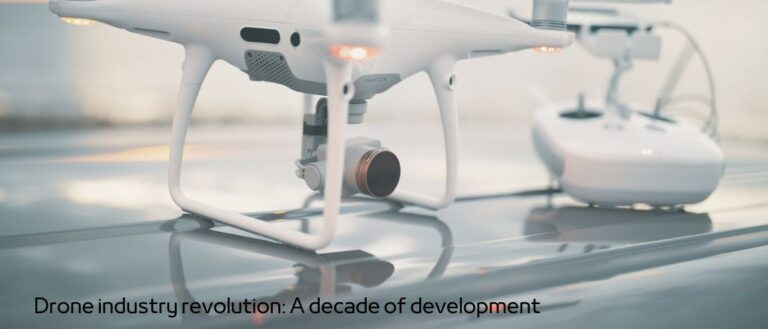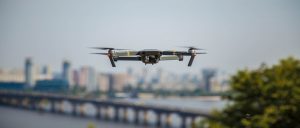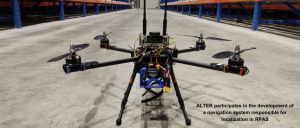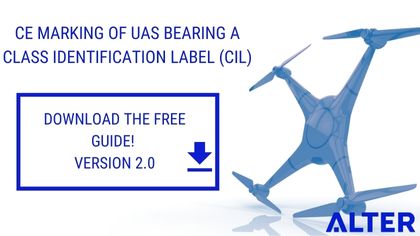For some time now, we have witnessed a true drone industry revolution. The demand for specialized drones continues to grow, both in the civil and military sectors, especially in professional tasks such as surveillance, transport, disinfection, industrial maintenance, mapping, or agriculture. As a result, the number of start-ups with very diverse approaches has skyrocketed, developing cutting-edge products that take advantage of a drone’s potential. On the other hand, the regulatory framework is not mature yet. Regulations have undergone changes and evolution in recent years to ensure reliable integration of UAS in the airspace by setting out the framework for the safe operation of civil drones in the skies.
For this reason, institutions such as EASA (European Aviation Safety Agency) have already developed a regulation that establishes three categories of UAS (Unmanned Aircraft System) depending on the level of risk involved in the operation. This way, we find:
- Open category: it is the primary reference for most of leisure activities with drones and low-risk commercial activities.
- Specific category: these are drones outside the open category whose operational risk is lower than that associated with the certified category.
- Certified category caters for operationswith the highest level of risk and those not contemplated in either the open category or the specific.
Drone operations in urban or rural environments using predefined routes in airspaces where U-space services are provided will probably fall into the last two categories above – the integration of the UAS inside either category will depend on the operational risks involved—. This includes unmanned drone operations carrying passengers or cargo. For example, ambulance drones, medical operation drones, air taxi services, or package delivery services that come directly to your balcony or the rooftop of your building. Indeed, EASA expects urban air mobility (UAM) to be a reality in Europe within 3-5 years as the development of new technologies, such as electrically-powered systems and increased battery capacity, applied to vertical take-off and landing systems, make it possible. Nationwide, on June 13, 2022, the National Action Plan for U-Space Deployment that will integrate drones into airspace was published.
U-Space and the delivery services
Worldwide well-known companies such as Airbus and Uber, among many other small companies such as Lilium (Germany) and Liberty (Netherlands), have already designed and developed autonomous ‘flying cars’ aiming at operating and being integrated into the U-space.
Uber already signed a Space Agreement Act (May 2018) with NASA to create a new air traffic control system for UAS. Dallas, Los Angeles, and Dubai were the announced cities where Uber would work on this program, where it expected to be able to open its air taxi service by 2020. Moreover, UPS has been the first to obtain certification to deliver packages with drones (certified by the FAA), and they have been transporting medical products between hospitals in North Carolina. As for package deliveries, Amazon, DHL, and Google have their drones to deliver packages, but they are not authorized to do so yet.
Wing has been testing its delivery services in the U.S. in Virginia since April 2021 and in Texas since October 2021, but in April, Wing announced commercial operations in the Dallas-Fort Worth area in partnership with Walgreens.
Wing has made over 250,000 deliveries in the U.S., Australia, and Finland. This figure will continue to escalate as UAS delivery services become part of our daily basis.
As can be seen, both in the United States and Europe, the trend is towards developing infrastructures for traffic management of all types of aircraft, both manned and unmanned. U-Space is not yet operational as the entire network of service providers, and the procedures for air navigation services need to be adequately developed so that the movement of drones in the airspace is safely done.

Drone industry insights
The development of the drone industry is a fact that we cannot dismiss these days. Their integration into the airspace is essential for safe and reliable operations. The solutions offered by U-Space are gradually being developed and verified, so it is necessary to continue working and looking for alternatives to define an air traffic network that makes any operation possible. Therefore, complex operations will be possible soon, which will not only give space for the development of the unmanned aviation industry but will also expand opportunities to promote new industries and improve our well-being. Thus, it is highly likely that in the foreseeable future,
- More drones involving commercial and professional activities will be integrated into the airspace.
- Drones aimed at fulfilling logistic duties for small and big infrastructures, security, and emergency services
- Last-mile delivery services
- Hazardous substances transportation
- Urban Air Mobility




